12 Employee Onboarding Examples For Your New Hires

Sorry, there were no results found for “”
Sorry, there were no results found for “”
Sorry, there were no results found for “”
There’s no doubt that how you handle employee onboarding could make or break their experience. It sets the stage for their attitude moving forward.
Put yourself in a new hire’s shoes for a minute. 👀
You just went through an extensive job search and endured rounds of interviews to prove why you’re the best fit. After providing references, background checks, compensation discussions, and several interviews, you finally land the job! 🎉
Bright-eyed and eager to start, you show up to New Hire Orientation to finally meet the team and scope the new office. But what you get instead is a stack of paperwork, outdated company videos, and a long list of administrative to-dos with no instructions on how to proceed or who to go to for answers.
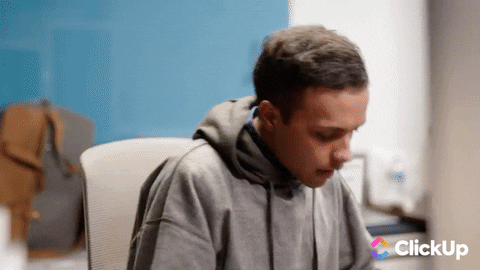
We’ve all experienced something like this or know someone who did. In fact, 88% of organizations have failed to meet their new hires’ expectations during the onboarding process. And it causes a negative ripple effect on employee sentiment, performance, and productivity.
If you’re an HR professional or have the ability to make the changes, you can take the steps to create a more impactful onboarding program that actually leaves a lasting impression beyond the first few weeks. 🙌
We’re here to show you employee onboarding examples and teach you how to use onboarding tools to streamline, track, and implement your program. Here are 12 real-life employee onboarding examples from professionals across various industries, including our very own ClickUp team!
Employee onboarding processes allow companies to share their philosophies, values, mission, and the trajectory of the business. It’s a crucial period for the growth and future of both the company and the new hires, as this is when new employees learn more about the organization and how they can contribute to its success and envision their future with the company, giving them a roadmap to follow throughout their journey.

Well-organized, functional, and engaging employee onboarding programs can ensure alignment between the organization and the new hires and, in turn, improve employee retention rate by 82%, boost productivity by over 70%, and increases the team member’s willingness to refer the company to other candidates to 93%.
📌TL;DR—In today’s world, where employees value culture fit and alignment more than ever before, an effective, personalized, and engaging onboarding program is one of the top indicators of your corporate culture and is essential to attracting, retaining, and winning the hearts of your top talents.
An effective onboarding strategy doesn’t have to be complicated—it just needs to be intentional, systematic, and with a splash of personalization. After all, this is your company’s shot at welcoming new hires into your world. It’s an opportunity to show them what you can offer as a company and how you can work and grow together. 🌱
Leading an effective employee onboarding program starts with an internal audit. Start by evaluating your current processes, understanding your company’s work culture and values, and aligning your organization’s goals with recruitment and HR goals. 🎯
1. Do your current employee onboarding process and practices align with our current company values? Are they tailored for the employees with their career growth and job satisfaction in mind?
📌 Why it matters: Over 56% of talents shared that they wouldn’t consider a job at a company if their values don’t align, and about 46% of employees in the U.S. and U.K. revealed they’re considering leaving their current employer because of mismatched values.
2. Do you have any feedback from your former and existing employees to review?
📌 Why it matters: Feedback is essential for successful onboarding. Honest employee feedback will give more insight into areas of opportunity to work on and adjust so you continually improve your employee experience.
3. What are the strengths, weaknesses, opportunities, and threats (SWOT) of your current onboarding program?
📌 Why it matters: Perform a SWOT analysis to help your organization identify each area. In turn, you’ll discover the insights you need to properly adjust your approach, as well as create fresh ideas to improve your overall employee experience and set more high-value initiatives and goals.
Learn more about SWOT analysis and see an example to help you get started here.
4. Does your HR team have a Standard Operation Procedure (SOP) that outlines your employee onboarding process in detail?
📌 Why it matters: Having clearly defined rules and actions documented and easily accessible for your team, and new hires can help standardize processes, reduce the learning curve and training time, and create alignment between new employees and employers.
⭐️ Pro tip: Get your HR SOP up and running, pronto. This HR SOP whiteboard template will help you organize and establish your HR to-dos and ensure that your staff is aligned with your company’s procedures.
5. What are your organization’s current 30-60-90 goals for the employee onboarding program?
📌 Why it matters: Once you’ve taken a 360-degree look at your current onboarding process, choose an area of opportunity and set focused and related goals. Use SMART goals to set your HR KPIs and metrics. Setting a 30-60-90 day plan for your HR and Talent Development teams helps clearly map out, define, and align on objectives. This also provides everyone with a regular check in so it’s easier to keep new hires on pace and see the efficiency of your onboarding program.
Looking for KPI examples for your HR team? This article details the 10 HR KPIs and metrics you need and how to track them. Once you’re ready to formally document them, apply the ready-to-use ClickUp SMART goals template to get an organized system for setting and tracking your goals in ClickUp.
Once you’ve completed your internal audit, it’s time to strategize and start planning how to create the best employee onboarding!
We’ve put together 12 real-life employee onboarding examples and ideas so you can see what can be incorporated to make your training program more memorable and impactful. ✨
We asked CEOs, people managers, and company leaders for their insights on the best employee onboarding practices and welcoming new hires. From handwritten welcome letters to welcome kits, these real-life employee onboarding examples may inspire you to improve the overall experience for new employees.
Bonus: Interview Templates
Having a mentor who new team members can ask basic questions about our organization’s culture, the chain of communication or even the cadence of day-to-day work helps prepare new hires to integrate into a new routine gradually.
This helps reduce confusion and anxiety, allowing us to get a much better idea of the hire’s skills and progress once real onboarding begins.

Welcome Kits are essential! It allows new hires to get excited and feel special and comfortable as they get into their role.
We allow them to order their own swag boxes, which consist of t-shirts, sweaters, socks, stickers, and branded AirPods. We also send them a Day 1 Survival Guide via email that outlines everything they should expect until their first day.
All of this together creates a safe space to reduce their first-day anxiety, making them feel prepared and ready.

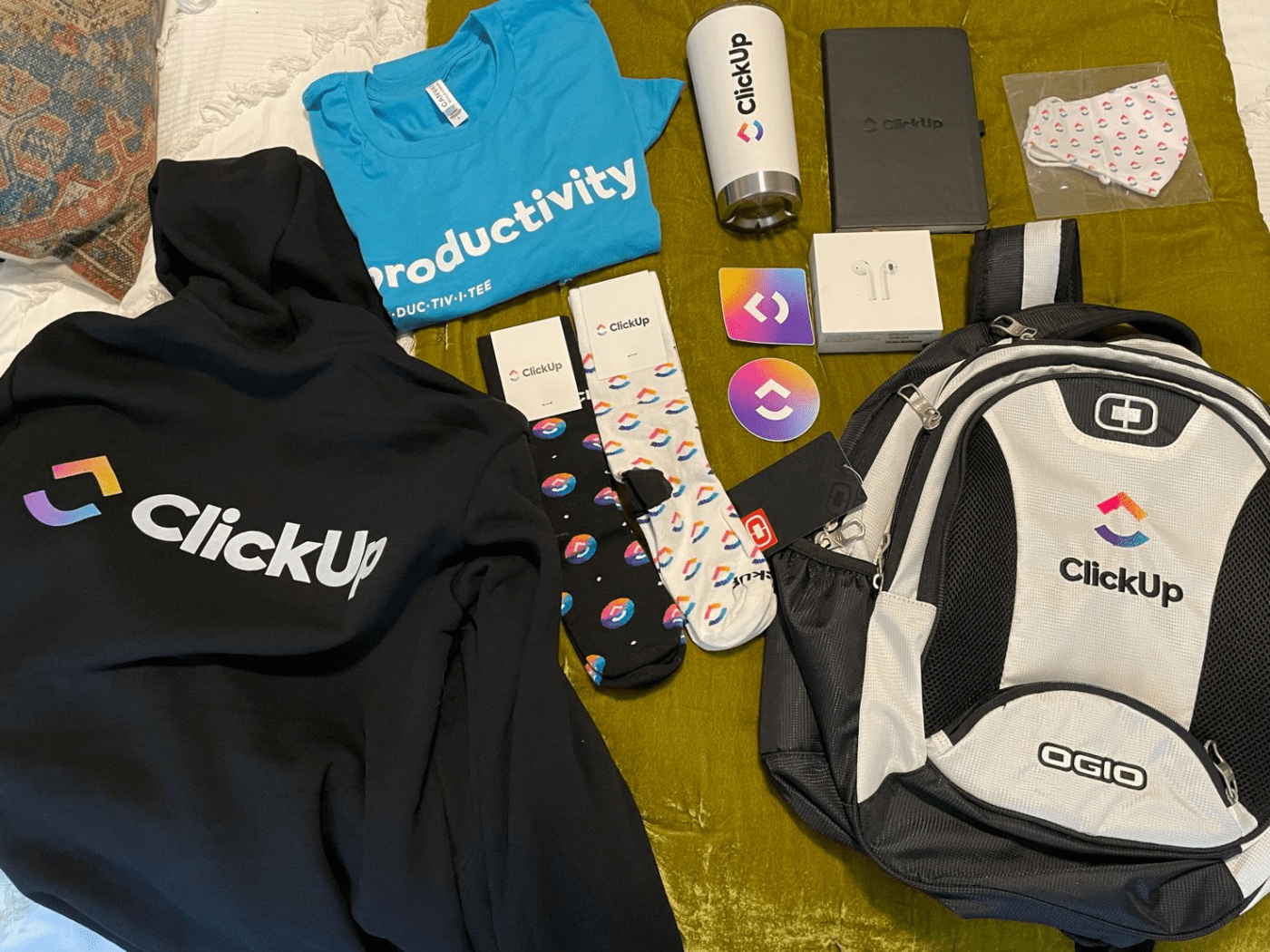
As soon as new employees get hired, they are sent a welcome kit that includes brochures, cards, an office plan, a welcome letter, and chocolates to start their journey with something sweet.

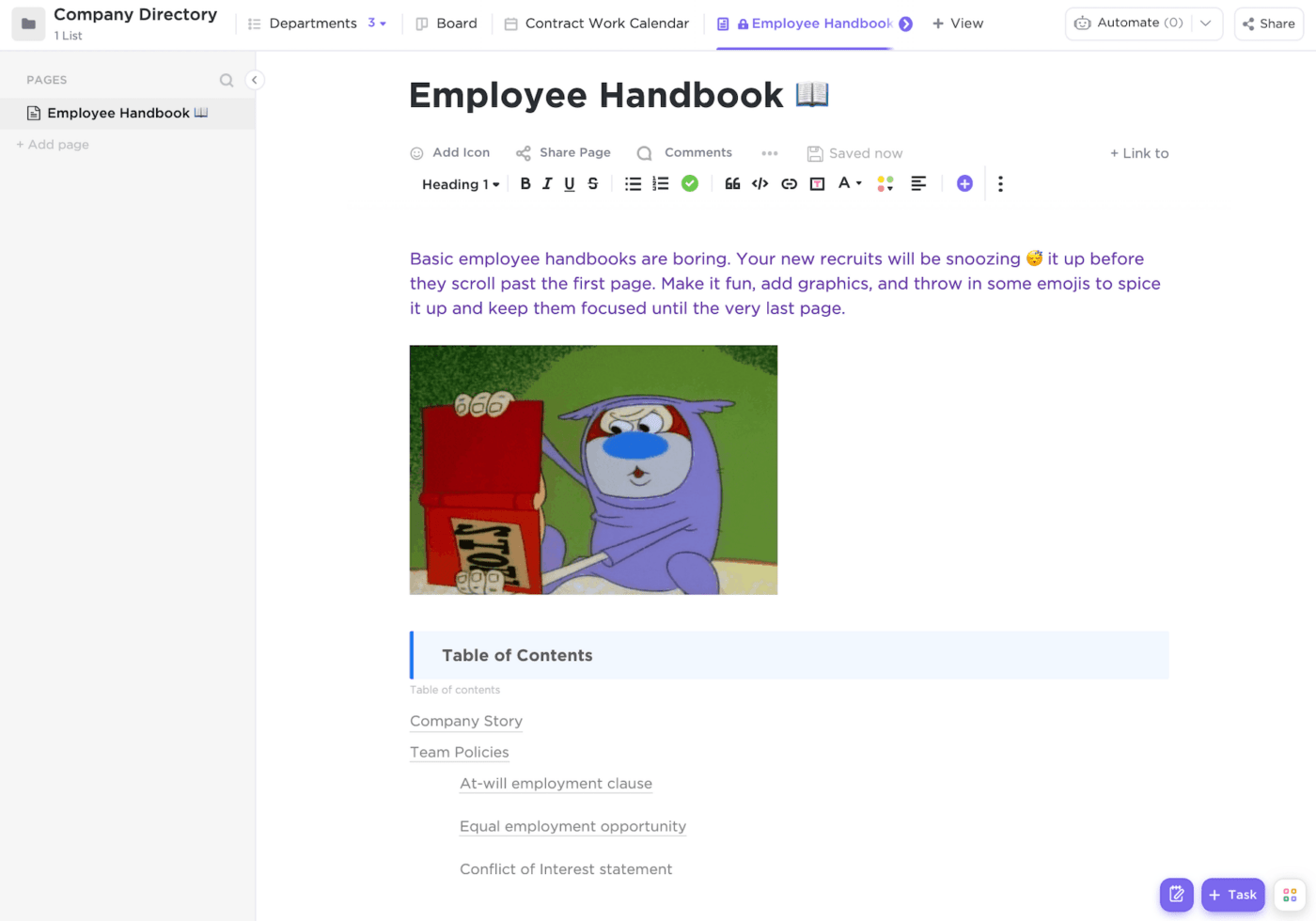
Starting a new job can be stressful, so the funny handbook helps lighten those first-day jitters and show off our company culture. We want new employees to understand that we love to have fun while we set expectations for them.
To make learning more enjoyable, we’ve created an employee handbook that is full of ridiculous humor and helpful information to help new hires adjust to their role, working out the team and managerial expectations along the way. According to our post-onboarding survey results, the handbooks are a hit! Many employees mention them as their favorite part of the process.

To make the first steps of onboarding easier for new hires, every company needs an employee handbook. And to make the complicated task of creating that handbook simpler, take advantage of ClickUp’s Employee Handbook Template!
ClickUp’s easy-to-edit and detailed Employee Handbook Template helps HR managers and company leaders:

Zeb, our CEO and founder, created an awesome video for our new hires to watch on their first day. It’s all about getting them excited for the job they’re about to do and the company they’re working for. He encourages them to allow themselves to grow, learn, and do a kick-ass job at whatever they came to ClickUp to do!

No secret that employee onboarding is crucial and fosters people’s engagement and sense of belonging. We have realized that one of the biggest barriers to great onboarding is that new hires don’t know what to expect, which brings a certain kind of anxiety that can disturb the whole process. With that in mind, we have decided to insert actions to minimize pressure on the first day.
So, At Talentify, we invite the leaders and teams to record a short video introducing themselves and talking about the company and the job and send the new colleague some days before onboarding.
We have found out that our new hires come for the process much more confident, knowing what to expect, and incredibly motivated.

The employee onboarding process at ClickUp is divided into three phases: Preboarding, Orientation, and Role-Specific Training.
The preboarding phase is led by the People Operations team, who ensures legal documents are signed, and all administrative tasks are completed before their orientation day.
The Orientation phase is managed by the Talent Development team, who provides the new hires with general information about the company, processes, and policy to ensure they know what they should be working on and setting them up for success.
Role-Specific Training is the last phase of the initial onboarding process. This is when new team members are introduced to tasks and information specific to their roles and teams.
It makes for a really focused few weeks that allow the new hire to ease into their role rather than feeling overwhelmed with everything thrown at them!

Proofhub’s employee onboarding framework is also divided into three phases. The first three weeks of onboarding are dedicated to helping the employee and organization get acquainted with each other.
New hires are also provided with a series of introductory videos and product demos to give the new employees a basic understanding of the company and our products. The second phase of onboarding includes a set of basic tasks for the new team member to complete to gauge their work efficiency and skill proficiency as well.
The final phase allows new hires to contribute their unique viewpoints on tasks and during weekly strategy sessions.
Breaking the onboarding process into phases and introducing specific tasks and information has allowed our new hires to absorb the new information more effectively, connect with their teams, and feel comfortable in a new environment.

Are your new hires remote or hybrid employees?
Digitize your onboarding program in ClickUp and manage employee onboarding from wherever you are! ClickUp allows you to easily create onboarding tasks, assign projects to the new employee, and even create custom statuses to clearly show each new-hire phase. Use this ready-to-use and editable Remote Employee Onboarding Template to get started now!
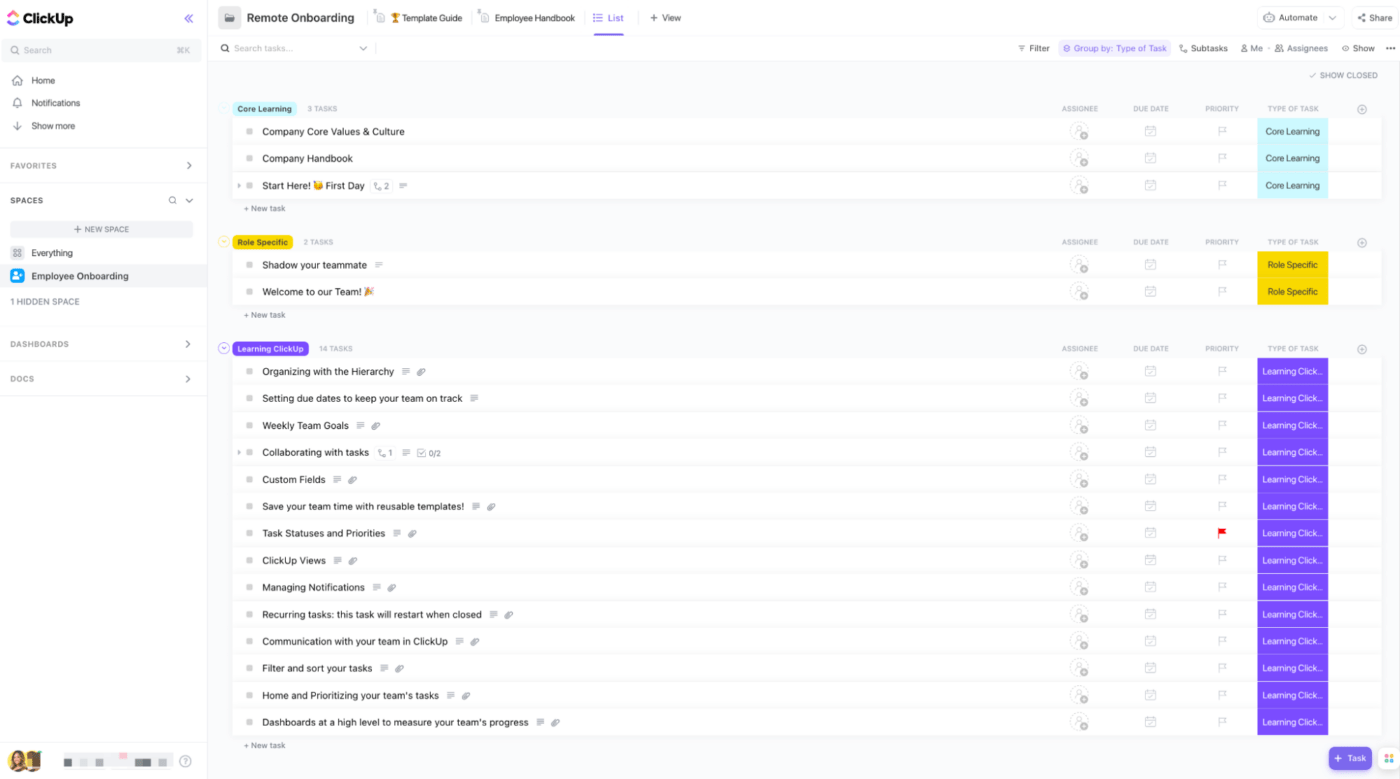
Everyone has different strengths, different challenges, and different styles of working and learning—these differences are what make each person unique and valuable to an organization. Build the best employee onboarding that’s suited for each individual by supporting their learning and working styles at work and by using HR tools with customization capabilities to allow each team member to personalize their workspace and workflow that best accommodates their needs and preferences. This will empower each new hire to build a workflow that enables them to work as efficiently and effectively as possible, and in turn, will be a win for your team as well. 🧠✨
We set up a pretty standardized onboarding system that we have been using for all our employees over the past year and a half. This onboarding process makes it easy to get started and stay on track.
Steps:
1. Give weekly briefings in person or over the phone about what’s going on at the company
2. Assign their first project to understand work style—Something simple like an email campaign or website redesign that can be done in a week or two that will help us get familiar with their work style
3. Let them loose to work on their own projects! They’re given complete autonomy over what they do, how long it takes them, and when they submit their work. We also make sure to keep them updated throughout the process so they know if there are any changes to deliverables and requirements.
With this onboarding system, we’ve witnessed our annual retention rates shoot up by 28%, helping us greatly mitigate the effects of the Great Resignation.

While writing a welcome letter to each employee might take up much time, the ROI is truly priceless. Not only does it create a positive start with your employees, but it also helps them feel valued and motivated to perform their best at work.
Here are 30 best welcome messages for new employees to help you give you ideas on how to start your letter. And when you’re ready to write your personalized message, use ClickUp Docs, where you can customize your letter by changing font colors, adding images, embedding videos, and more! Once you’re set to share it with your new employee, simply send a public or private link.
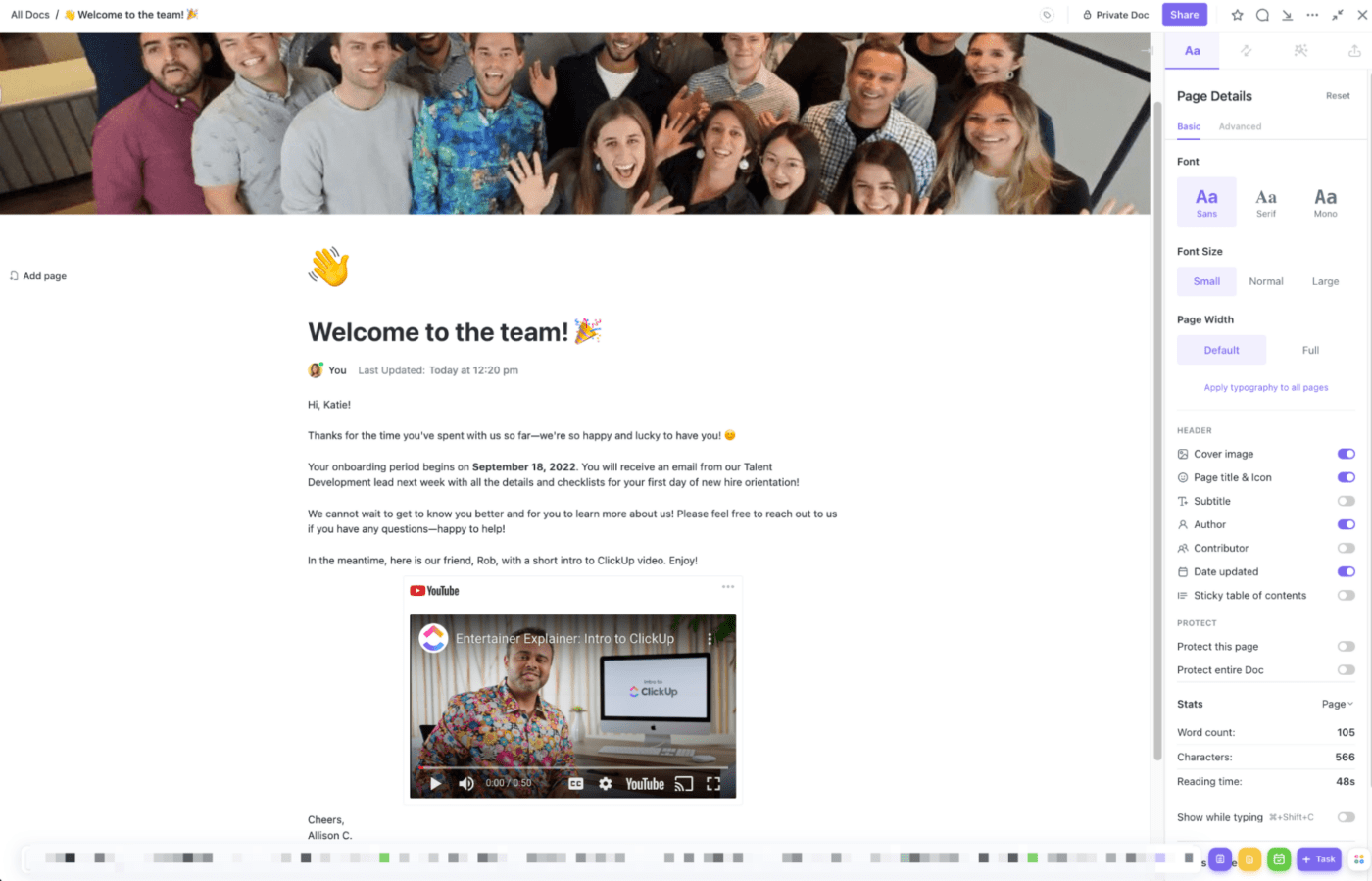
We believe that onboarding should be a holistic and ongoing experience, not just a one-time event. A key part of our onboarding program is our handwritten welcome letter. Each new employee receives a personalized letter from their manager on their first day, welcoming them to the team and highlighting some of the things they can look forward to in their new role.
We’ve found that this simple gesture helps set the tone for a warm and supportive working environment and lets our team members know that they’re valued from the outset. Plus, it’s just a nice touch that makes people feel special!


Loom gives our company the advantage of recording a shared screen to explain simple tasks, processes, and information needed while showing the face of the person speaking and recording their voice to make it more personal and engaging for the new employee.
With Loom videos, we can break important information into a maximum of 2-minute videos very specific to each task, making it easy for candidates to return to them and re-watch them when needed. It also allows speeding up the video to be adjusted to the listener’s preference.

Record, send, and play a Clip video all within a ClickUp task. Instantly capture your entire screen, app window, and browser tab, and add and record your voice while you create a walk-through video. When you’re finished recording, simply and instantly share your Clip video with your team or any new hire via a shareable link, or drop the link within a ClickUp task.
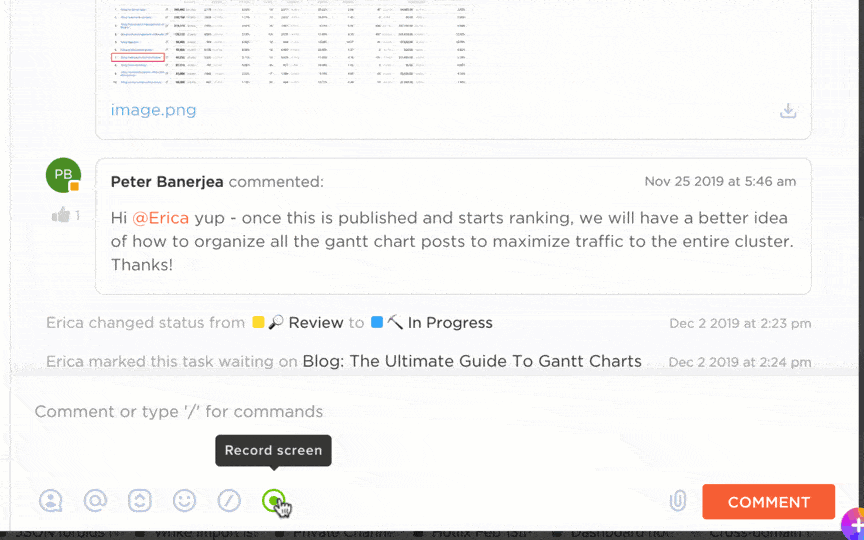
Create a “Working with Me” Doc in ClickUp and share it with your team members. Include helpful information such as personality type, management style and philosophies, communication styles, goals, hobbies, and pet peeves!
We ask all new hires to create a “user manual” for themselves, which is a brief document that includes a bit about their upbringing, professional journey, learning styles, communication preferences, and hobbies. These new hires also have access to the user manuals of every other employee across the organization.
It’s an incredible way to humanize colleagues, especially in a distributed work environment, and helps new hires quickly acclimate to their teammates and company culture.

An onboarding incentive that really works in a real-life is Onboarding Buddy Program. This involves assigning each new hire an experienced staff member to care for them in their first few weeks on the new job.
The onboarding buddy serves as the first point of contact, assisting and navigating new hires. They provide support and insight into the company’s culture and answer questions. They facilitate the onboarding process, making the experience of changing jobs as painless as possible.

To integrate new employees and reveal the powerful capabilities of ClickUp, our Product and Systems Enablement team host 4 days of learning through lectures, hands-on experiments, customer stories, and group discussions in a program called Product Lab.
It’s during these interactive sessions that we engage new Crew members with personas to think empathetically about our customers and application to think critically about how our platform solves customer challenges.
We’ve heard time and again about how much this experience has been the moment when the product really clicked for Crew members. 💡

We’ve realized this mentorship phase enables our new employees to settle in faster, to quickly adapt to our culture and processes, and for us to provide the right environment, tools, and support system for them to excel in their roles from the start.
This allows us to connect with our new employees as early on as possible in the employment journey, develop relationships with them before they even start working for us, and get a better understanding of each employee’s strengths and weaknesses.

Professional development centered around psychological safety, empathy, and Radical Candor are some important initiatives that have tremendously boosted employee engagement at ClickUp.
When employees truly feel that they are part of something bigger than themselves, it reflects within the company. When they feel that their thoughts, ideas, and feedback are valued, they make sure to bring forth solutions. When all people, regardless of role, realize that they contribute to the psychological safety of an organization, all people work hard to uphold it.

That wraps up this round of employee onboarding examples! Now it’s time to give you tips on how to effectively set and track your onboarding program and efforts. 🎯
By now, I hope we’ve helped spark some great ideas for your onboarding program! But to ensure it’s a success, you’ll need to set goals and measure your progress. Here are our tips for setting goals and tracking success:


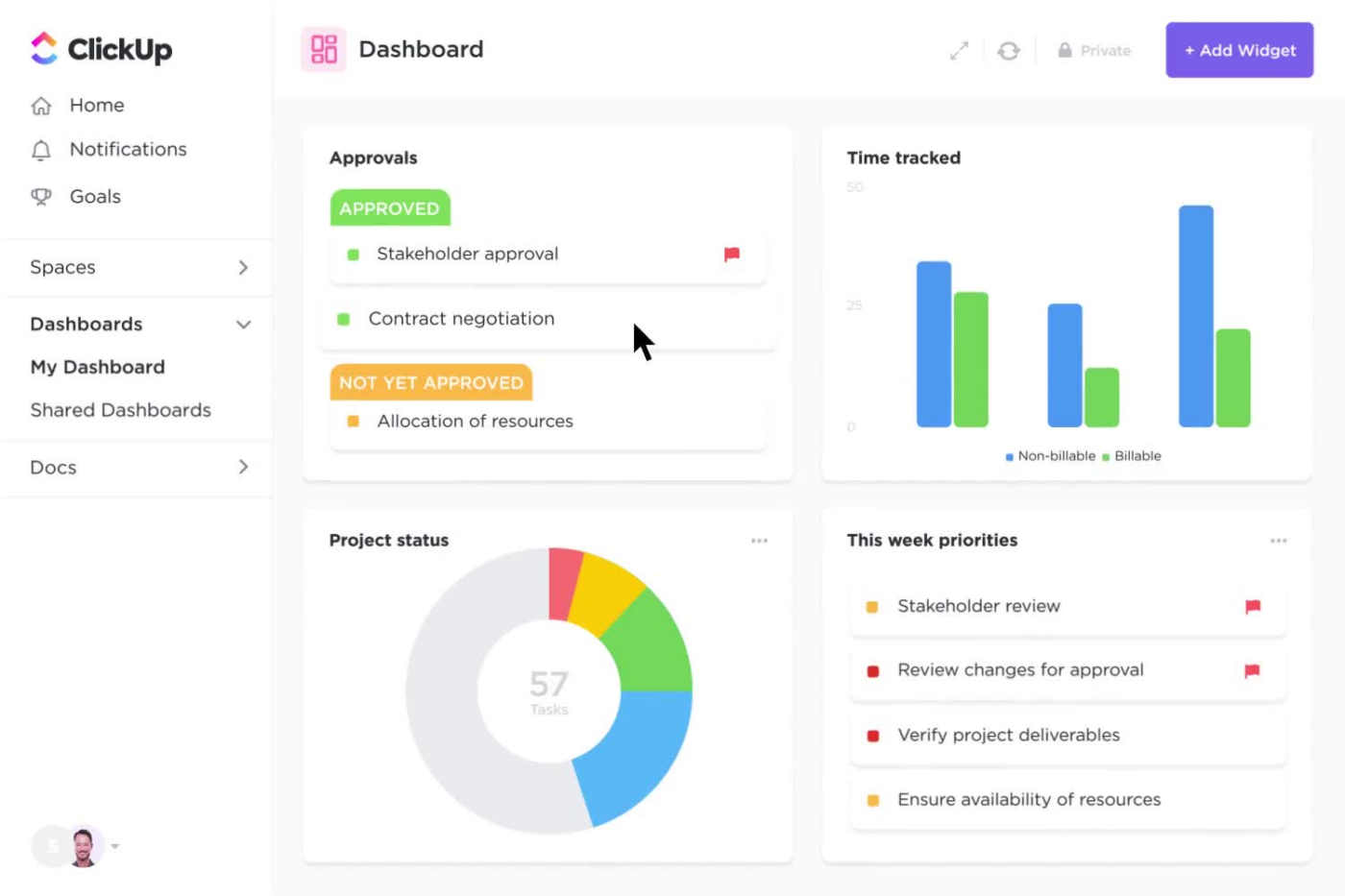

Employees are the most valuable asset companies can have. It’s their experience, abilities, skills, knowledge, and perspectives that help shape the future of your business.
Just as much as they invest their time and energy into your organization, do the same for them and treat them as business partners. 🤝
Attract and retain top talent by understanding the importance of a solid onboarding program. Try out some of the employee onboarding examples shared by other professionals across industries.
Create a strong first impression, build rapport, provide them with all the tools they need to succeed in their roles, and allow them to evolve in their career within your organization. After all, they know the business the best.
These people are the voices and faces of the company and the mastermind behind many of your brilliant campaigns, projects, and initiatives.
It’s time to future-proof your onboarding and use a work tool that’s built for your whole organization—get organized, improve team collaboration, systemize your processes, and streamline your onboarding and talent development programs with ClickUp. 🚀

© 2025 ClickUp